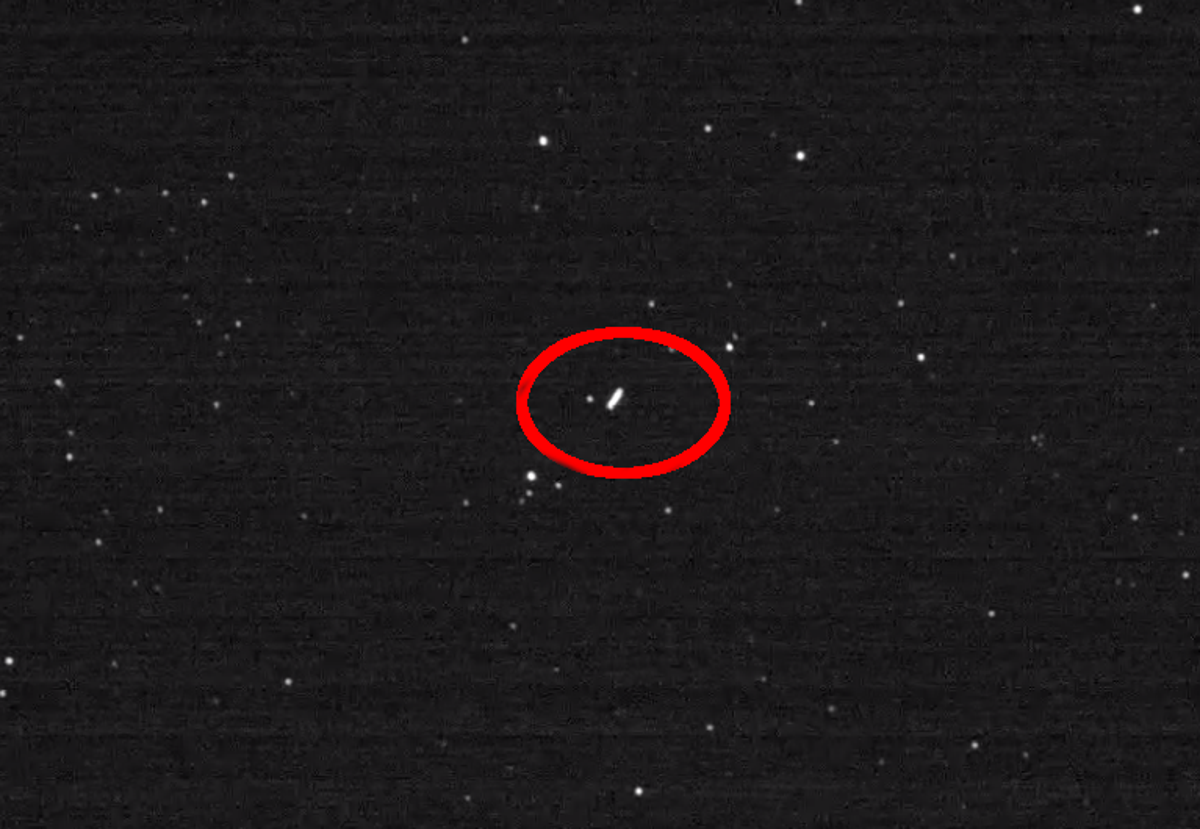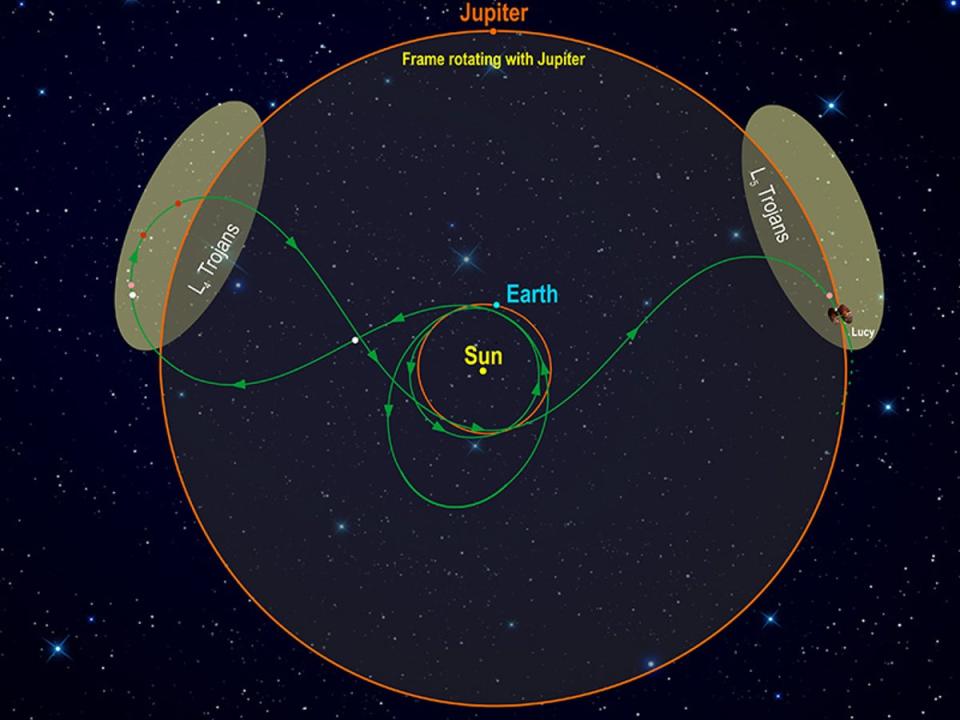NASA’s Lucy spacecraft just passed Earth on its way to Mars and won’t be back for another two years

Astronomers and skywatchers are sharing their images and videos of Nasa’s Lucy spacecraft as it buzzed close by Earth on Sunday.
The large school bus-sized Lucy spacecraft passed within 220 miles of Earth on Sunday morning, and was visible to viewers in Western Australia and the western US. Lucy’s flyby came on the one-year anniversary of its launch, the first high-speed close encounter of a planned 12-year mission to visit the Jupiter Trojan asteroids.
Nasa encouraged people to share images of Lucy on social media using the hashtag #SpotTheSpacecraft, or images of themselves waving at the passing Lucy using the hashtag #WaveToLucy.
Members of the Lucy mission team based on Colorado had to drive to Nebraska to get out from under cloud cover in order to capture the video of Lucy streaking overheard that they then shared on the social media website Twitter.
#SpotTheSpacecraft update: The Lucy Team in Boulder and Littleton, Colorado were stuck with overcast skies, but two intrepid team members made a roadtrip to Scottsbluff, Nebraska and spotted Lucy with a telescope and shared what they saw. Whoot! #LucyMission#EarthGravityAssist pic.twitter.com/8LYhFBNdqp
— Lucy Mission (@LucyMission) October 16, 2022
Pluto researcher Marc Buie took an image of Lucy that was shared by French space-blog Twitter account @RevesdEspace, while the Virtual Telescope Project, an international robotic telescope cooperative, also capture Lucy images.
Despite a very bright Moon just 6 degrees away, we tracked #LucyMission 12 hours after its fly-by and showed it live to many people all around the globe. #SpotTheSpacecraft @LucyMission pic.twitter.com/fk7uj4EqGT
— Virtual Telescope (@VirtualTelescop) October 17, 2022
Nasa’s Goddard Space Flight Center, meanwhile, has shared animations on Twitter illustrating Lucy’s Earth flyby and subsequent mission. The animations also highlight the spacecraft’s unique, circular solar panels, each 24 feet in diameter — large enough to supply Lucy with the 500 watts of power the spacecraft will need while traveling through the dark reaches of space among the asteroids near Jupiter.
Launched from the Kennedy Space Center in Florida on 16 October 2021, Lucy is Nasa’s first mission to the Trojan asteroids of Jupiter. The asteroids are large populations of space rocks that share the gas giant’s orbit, but precede and follow the planet by 60 degrees along that orbit.
Sunday’s flyby of Earth gave Lucy added momentum, slingshotting the spacecraft out toward the orbit of Mars in a maneuver known as a gravity assist. Lucy will make another gravity assist pass by Earth in 2024 before finally heading out toward its first targets.
The spacecraft will first fly by an asteroid known as Donaldjohanson in the main asteroid belt in 2025, a space rock that is not a Jupiter Trojan, but is conveniently located along the way.
Lucy will then reach the leading population of Jupiter Trojans in 2027, flying by four space rocks, Eurybates, Polymele, Leucus, and Orus, each named for characters in the Homeric epic The Iliad.
Lucy will then head back to Earth for another gravity assist flyby of our planet in 2031, which will put the spacecraft on a course to visit the trailing population of Jupiter Trojans in 2033.
Seen from above, Lucy’s flight path looks like a figure eight twisted up like a pretzel, according to Nasa.

You can follow Lucy’s current trajectory and watch an animation showing its future motion relative to Earth, asteroid targets, and the planet Jupiter by going to Nasa’s whereislucy.space website.

